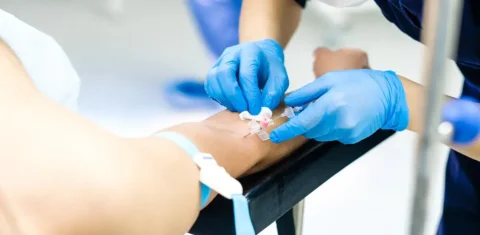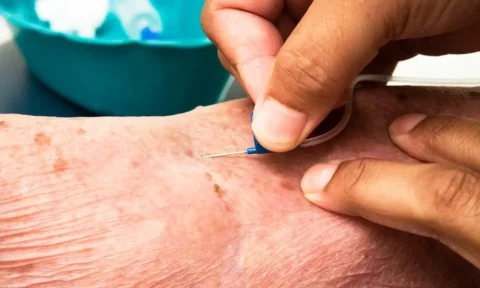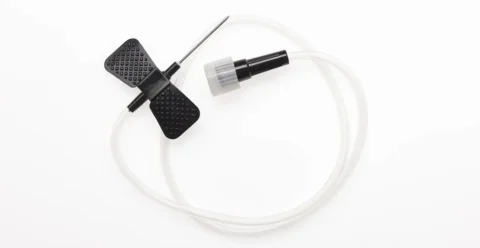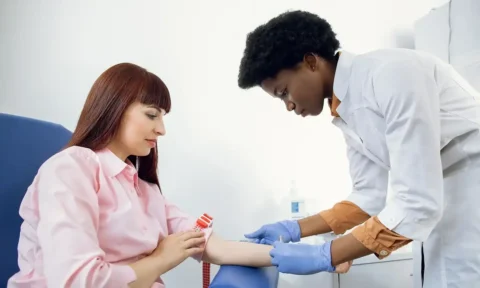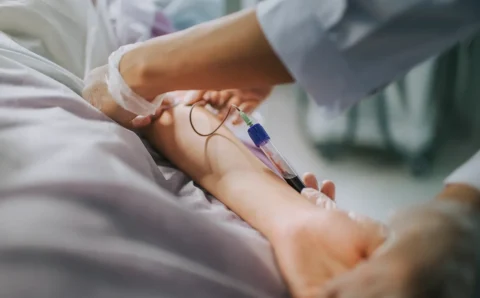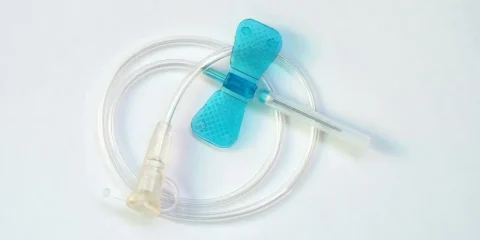Many patients still feel squeamish upon having injections for extracting a blood sample, inserting IV fluids, or receiving injections. That’s why when they’ve experienced butterfly needle injections, a medical device known for causing minimal pain, many would start requesting this type of needle. But winged infusion sets aren’t suitable for all procedures, leaving many practitioners worrying over their patient’s preferences.
So how should you convince a patient that they don’t need a butterfly needle? A patient requests butterfly needles mostly because they’re afraid of the pain from straight needles, so you must first acknowledge how they feel. Discuss why you need to use a different device and provide more options to reduce discomfort. You should also reassure them and explain what butterfly needles are for. You can also discuss the policies on limiting its use.
How to Convince Your Patient Against Using a Butterfly Needle
A butterfly needle is a medical device for injecting small, superficial veins, specifically those of children and elderly patients, for blood collection or infusion of medication or fluids. It has a smaller needle, allowing a medical professional not only to access hard-to-reach veins but also to cause minimal discomfort.
Because of this, many patients request butterfly needles instead of the usual type for their blood draw or medication administration. But many practices also have specific hesitations about using winged infusion sets due to disadvantages in risk and cost-efficiency.
To convince a patient that they don’t need a butterfly needle, you might want to acknowledge their anxiety first. Discuss why choosing other devices can offer more advantages. You may offer the patient more options for reducing pain and reassure them of the procedure. Explain the disadvantages of using butterfly needles when not needed and the FDA guidelines relative to their supply disruption.
1. Acknowledge Their Concerns
You should know first why the patient requests to have their blood sample drawn with a butterfly needle, and most of their concerns come from the anxiety of receiving painful injections.
For a patient who barely gets injections, especially children, the thought of a needle poking into their skin is terrifying — some patients also have actual phobias over this. You might want to start by acknowledging how they feel about the procedure to calm them down, earn their trust, and have them listen to you.
2. Discuss Why You’ll Use a Different Needle
When you’ve started building a safe and reassuring space for them, you can now discuss why you’ll have to use a different needle. It can also help to discuss how the needle would go and how it might feel when injected. You may explain to the patient the appropriate situations a device must be used.
3. Provide More Options to Reduce Discomfort
Patients with anxiety over getting injections need more options for addressing how they feel about injections. Especially when dealing with young patients, you might want to keep the experience as positive as possible to set them up for success in future procedures. Providing options is a simple gesture to build trust and make them feel reassured that they’re safe and valued.
Some options to reduce discomfort are applying a numbing cream, ensuring that the patient’s arm is relaxed, or applying slight pressure on a nearby area – this tricks the brain and lessens its perception of the needle pain. When dealing with kids, you can distract them, ask parents to prepare by doing a role-play at home, and avoid restraining the child.
4. Reassure the Patient of the Procedure
As mentioned, giving the patients proper reassurance about the procedure greatly builds trust and makes them feel calmer. This is also a necessary part of customer service, which is vital, especially if you’re in the healthcare industry. Some injections can become more painful than others also because of the phlebotomist’s skill. You can reassure them that you’ll try to go as quickly yet gently as you can.
5. Explain What Butterfly Needles are For
You might also want to explain what butterfly needles are for and why they’re sometimes not the best option. Butterfly needles are only suitable for patients with veins that are difficult to locate.
Butterfly needles might be convenient during these cases, but it also comes with some disadvantages, the reason they should only be used when needed. It collects your blood sample way too slowly due to having a smaller needle, so you might end up having the needle on your body longer than usual.
It also has risks of accidental needle sticks that may require another infusion. Butterfly needles have risks of vein damage and should only stay for at least 5 hours for IV fluids. Because of this, butterfly needles must only be used when needed, like when accessing superficial veins and other intravenous routes difficult to access.
6. Discuss FDA Policies on Butterfly Needle Shortage
You can also discuss with your patient the current shortage of needles, blood collection tubes, and other medical supplies. This supply disruption is due to the vaccine campaign against the COVID-19 pandemic, where billions of syringes and other medical supplies are used more than usual. Because of this shortage, healthcare providers are encouraged to limit the usage of butterfly needles and other items and use them only when needed.
What to Do If the Patient Insists on Having Butterfly Needles
Those are some of the ways to convince your patient that they don’t need to have butterfly needles. They might insist on using one because it involves minimal pain and is less intimidating than usual needles due to its size.
But if your patient still insists on having butterfly needles, you can consult your superior. Ask them to confirm if you can honor the patient’s request and just be extra cautious about conducting the blood collection or IV infusion. This is still necessary for customer service. If you’re hesitant about performing the venipuncture with butterfly needles, you can respectfully look for other phlebotomists more comfortable with doing it.
Browse Our Catalog at FACE Med Store for Butterfly Needles and Other Medical and Beauty Supplies
Butterfly needles are medical devices with smaller needles, suitable for accessing superficial veins with minimal pain. Because of this, many patients request it for their venipuncture procedures, but it’s not suitable for everyone. You can convince them by acknowledging their emotions, reassuring them, and explaining why other needles are better. When it comes to ensuring the patient’s comfort and trust, starting with high-quality supplies is a must.
FACE Med Store is one of the trusted partners of many healthcare and aesthetic practices for providing the best medical and beauty supplies. We ensure providing only premium items for your healthcare establishment or medical spa at competitive prices. Get high-quality supplies today to promote performance in your practice. Browse our catalog to learn more about our products, promotions, and other services.
